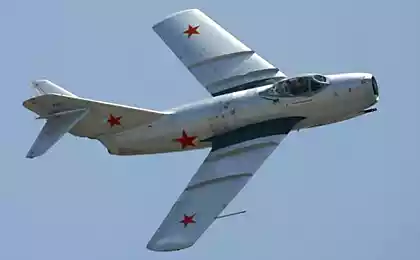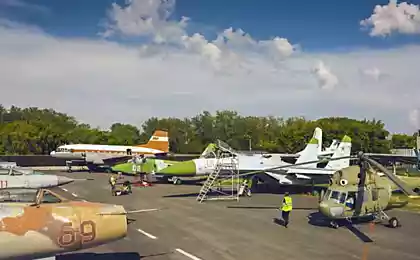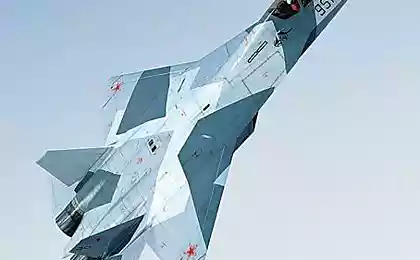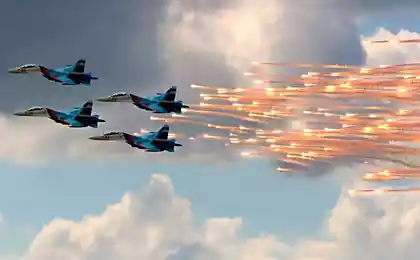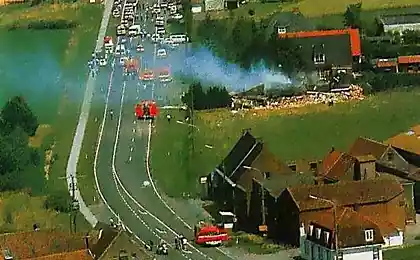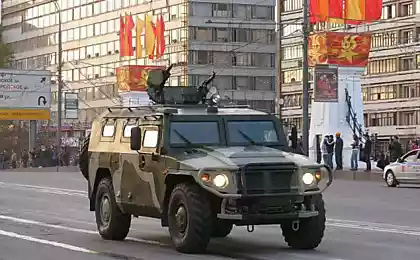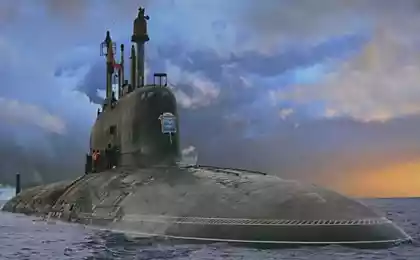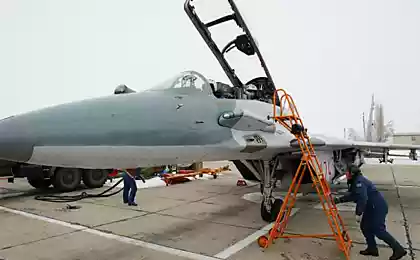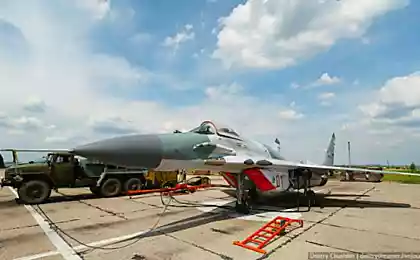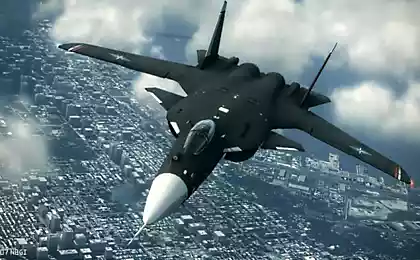1021
MiG-15 fighter of the first generation
This selection will begin coverage of fighter jets mira.Snachala Soviet model, and then to compare the likely against-aircraft ... druga.nachnu.
So, the MiG-15
OKB. AI Mikoyan
9 photos, text © Fighters (avial.narod.ru)
-
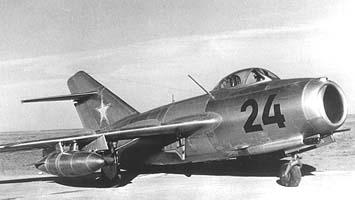
tactical fighter
Just as the word "Ghost" is often used in our country in the mainstream press as a collective name for all American fighter planes and the word "MiG" abroad is almost synonymous with the name of any Russian fighter. This began at the end of 1950. When the Americans first encountered in Korea with the first mass Soviet jet fighter MiG-15.
Design MiG-15 began in 1946. The plane was designed by RD-45 (English version of "Ning» I). First, a preliminary design was created by I-320 (FN) aircraft with straight wings, is a variant of the MiG-9. But by March 1947. tests in wind tunnel showed that the most expedient to create an aircraft with swept wings equipped with aerodynamic partitions. This aircraft was designated I-310 (C - from the "arrow-shaped"). Construction of the first prototype I-310 (C-01) was completed on 27 November 1947. and 30 December 1947. He made the first flight. According to test results have been somewhat shortened fuselage and the engine nozzle, modified ailerons, wing chord change and increased tail sweep. The second prototype S-02 (with a Rolls-Royce engine "Ning" P thrust 22 kN 3, 2270 kgf) first flew on 27 May 1948. The third prototype, also with the engine "Ning» II first flew on June 17, 1948. and during the design tests, which ended October 15, 1948. It reached a speed corresponding to M = 0, 934.
The first stage of state tests in GK NII VVS from 27 May to 25 August 1948. involving aircraft C-01 and C-02, ended with the decision (adopted in August 1948.), the Council of Ministers to launch a small airplane in a series under the designation MiG-15 fighter, along with La-15 EDO SA Lavochkin. The first production aircraft first flew on December 30, 1948., The first aircraft arrived in the winter of the 1948-1949gg. The first drill units on the MiG-15 were formed in 1949. The second stage of state tests (acceptance flight tests) was held from November 4 to December 3, 1948. with the participation of all three prototypes before 20 May 1949. The Council of Ministers has decided to build a series of large aircraft. Release of the MiG-15, it was decided to organize nine Russian factories, freeing them from the production of aircraft. A total of 11073 Russian built MiG-15, and taking into account the production of the total number of licensed vehicles reached 15560. built MiG-15 production licenses were organized in single cases in Czechoslovakia by Aero under the designation S102 / S103 and Poland under the designation LIM- 1 / LIM-2, in a double version - in Czechoslovakia under the designation CS102.
Single MiG-15 are widely exported to the Warsaw Pact countries, China, North Korea and other developing countries, particularly in the Middle East (Egypt, Syria). MiG-15UTI exported to most countries had armed single MiG-15, MiG-17 and MiG-19, as well as in a number of countries have used the MiG-15UTI for training pilots of the MiG-21: Afghanistan, Albania, Algeria, Angola, Bulgaria, China, Cuba, Czechoslovakia, Egypt, Finland, German Democratic Republic, Guinea, Hungary, Indonesia, Iraq, North Korea, Mali, Mongolia, Morocco, Nigeria, Poland, Romania, Somalia, South Yemen, North Yemen, Sri Lanka, Syria, Tanzania Uganda, Vietnam. CS-102 Czechoslovak production were exported to Warsaw Pact countries, Iraq and Indonesia. MiG-15 Chinese Air Force (which had in China the designation J-2) after receiving the Chinese MiG-17 re-exported under the designation F-2 (MiG-15bis) and FT-2 (MiG-15UTI) in Albania, Bangladesh, North Korea, Pakistan, Sudan, Tanzania and Vietnam.
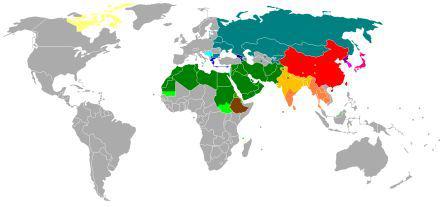
The MiG-15 was built as standard in the following versions:
MiG-15 - the original serial front-line fighter. First manufactured in a configuration identical to the third prototype C-03, later produced in large quantities in the basic configuration of the MiG-15 (SW), characterized by the use of the RD-45F, the possibility of installing external fuel tanks of 260 liters, cannons NR-23 instead NA-23, sight TSA-TSA instead of 3H-1H and numerous small changes in design and systems. MiG-15 (SV) is actually considered to be the head serial MiG-15, its state tests were carried out from 13 June 1949. January 7, 1950. The MiG-15 was built from the end of 1948. at the beginning of 1950. And then began the production of the MiG-15bis. Is produced in Czechoslovakia under the designation S102 (first flight on 13 April 1953., Built 853 aircraft) and Poland under the symbol LIM-1 (in January 1953. September 1954., Built 227 aircraft);
MiG-15PB - initial designation option with two wing external fuel tanks for 260 liters. Shortly after the development of this embodiment suspended tanks became standard equipment, the index IB was removed from the aircraft and the possibility of suspension of these tanks have been designated a MiG-15;
MiG-15UTI (I-312, ST-2 and ST) - double training option. Decree of the USSR Council of Ministers on the development of this version was published April 6, 1949. The first flight of the first prototype took place six weeks later on May 23, 1949. In the autumn of the same year he was recommended as a great series. It was built in large numbers in Czechoslovakia under the designation CS102 (aircraft manufactured in 2012);
MiG-15P UTI (ST-7) - training aircraft with radar RP-1 "Emerald". The first flight in 1952. In 1953. Radar "Emerald" was held on this plane testing in a variety of weather conditions, after which the aircraft was built in small series;
MiG-15bis (DM) - improved production version, distinguished setting engine VC-1 instead of the RD-45F, cannons NR-23 instead of the HC-23, a slightly modified airframe and improved equipment. The first flight of the prototype took place in September 1949., Production began in 1950. MiG-15bis commercially built under license in Czechoslovakia (620 machines under the designation S103) and Poland (LIM-2);
MiG-15Sbis (SD-SIL - from "increased overhead tanks") - escort fighter with two external fuel tanks of 600 liters;
MiG-15Rbis (CP) - fotorazvedchik with two external fuel tanks of 600 liters. Armament included only one gun HP-23, instead of the other two guns were mounted camera AFAB 40;
MiG-15bis (KFOR-5) - an unmanned target drone. In this version of the modified versions of manned-of-life.
In addition to production aircraft, it was created a large number of advanced options not recycled for one reason or another in a series, as well as purely experimental modifications:
MiG-15U (SU) - a pilot version with limited mobility gun mount B-1-25-W-3, includes two gun W-3 with a caliber of 23 mm ammunition at 115 rounds of ammunition, mounted on the turret that can vary according to elevation angles ± 11 degrees up and down -7 °. State tests were in the Air Force Institute from June 30 to August 10, 1951 .;
I-320 (P-1 / P-2 / P-3) - Double twin-engine all-weather interceptor. Armchairs pilot and pilot-operator radar located nearby, engines placed staggered one after another. The first prototype (F-1, its first flight April 16, 1949.) Was equipped with RD-45F, the second and third (P-2, dekabr1949g., And P-3 March 31, 1950.) - VC-1 engines. The aircraft was equipped with a single-antenna centimeter radar "Tory" and then "Kite". Under the same requirements were built Su-15 (the first with such a designation) and La-200, which is the same as I-320, in the series did not go, and has been adopted double interceptor Yak-25, created a little later under the revised requirements;
MiG-15bis (CE M) - flying laboratory with increased fin and ailerons and wing power to loosen restrictions on the speed of the aircraft under the terms of its sustainability. October 18, 1949. this aircraft in a shallow dive exceeded the speed of sound (pilot D.M.Tyuterev);
MiG-15Pbis (SP-1) - an experienced all-weather interceptor. Equipped with radar, "Tory." Armament included only one gun H 37D-45 with ammunition cartridges. The first flight took place in December 1949., In 1951. It was built five aircraft. But in a series of car did not go out because of problems with radar and lack of stability of the aircraft;
MiG-15Pbis (SP-5) - flying laboratory for testing radar RP-1 "Emerald-1." Armament included only one gun N-37D. The tests took place in 1950 .;
MiG-15bis "Boatmen" - experimental fighter escort to the system for towing bomber Tu-4. The system included a tow rope with a steel harpoon is shot by a pneumatic system. After the engagement of a harpoon rope system, manufactured with the bomber, fighter engine is turned off and he was flying as a glider. If necessary, the engine for the MiG-15 fighter aircraft to launch and separated from the bomber, and after the air battle could be joined again with the bomber. The plane "Boatmen" has not been adopted by, and piston bomber Tu-4 soon replaced the jet Tu-16;
MiG-15bis (SD-21) - an experimental aircraft equipped with cannon armament in addition to two underwing pylons for suspension NAR C-21 air-to-ground caliber of 210 mm. It was also tested with two 260 liter drop tanks in addition to the NAR C-21;
MiG-15bis (SD-57) - an experimental aircraft to test blocks NAR ARS-57 caliber 57 mm (2x12);
MiG-15bis (ISH) - fighter-attack aircraft with two underwing pylons, which were suspended bomb FAB-50 and FAB-100, NAR ARS-212 and TPC-190 large-caliber or blocks of six or 12 NAR smaller caliber. It is also possible suspension discharged fuel tanks. It was built 12 aircraft have been tested in the Institute of the Air Force, but in a series of aircraft was launched;
MiG-15bis to the system of refueling in the air - the prototype, which was installed in-flight refueling of aircraft Tu-4 method hose-cone developed by OKB AS Yakovlev. Test five prototypes were held in 1953. But the system has not been accepted for production vehicles because of the complexity of its operation;
MiG-15bis (KFOR-5c, KFOR-7) - unmanned aircraft system with missiles homing. They were tested in 1955.
For the production of the MiG-15, the restriction on the number of M is set to M = 0, 92 altitudes from 900 to 5000 m, M = 0, 96 - for heights from 5000 to 7500 m and M = 1, 0 - for heights more 7500 m. at a speed higher than the corresponding number M = 0, 86-0, 87, in the first MiG-15 could meet backlash roll to the country and his feet "valezhka" - spontaneous krenenie inaccurate due to aging aircraft wing manufacturing contours and deformation wing in flight as a result of presence of the notch under the wheel gear. From "valezhki" managed to get rid of the improvement of production technology and a number of constructive measures: strengthening the structure of the wing, setting "knife" over the back edge of the wing, etc.
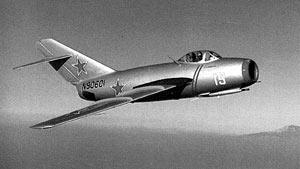
CONSTRUCTION. The MiG-15 is a single midwing normal scheme with swept wings and tail surfaces and one engine in the rear fuselage. All-metal construction.
Wing with a thick (1, 2 to 2, 0 mm) casing consists of two detachable brackets, each of which is attached to the fuselage at four points. Wing sweep through the chords 35 1/4 degrees, the installation angle of 1 degree, the angle V is equal to negative cross -2 degrees, extension 4, 85, narrowing the 1, 61, the mean relative thickness of 10, 3% (upstream), the wing profile variable along the span (the root TsAGI P-10s, TsAGI end CP-3). On top of each wing is set at two wind comb to remove overflow of air flow along the span. The wing is equipped with ailerons internal wind shields, compensation and flaps with a sliding axis of rotation. The length of the aileron 1, 61 m, the total area of the aileron without compensation 1, 01 sqm, the maximum deflection angle of 15 degrees up and down. The left aileron is set trimmer, the MiG-15bis to the root of the right aileron - "knife", designed to eliminate kreneniya airplane flight at steady state (due to a possible asymmetry of the wind), and as a result reduce the load on the control handle. The scope of the flap 2, 19 m, and the both flaps 2, 36 meters, a limiting deflection angle flaps 55 degrees (when they are shifted back to 0, 2 m, i.e. 41% of its chord is 0, 48 m), air 20 degrees.
Fuselage semi-monocoque, made of two parts that connect via legkorazemnogo compounds for easy mounting and dismounting of the engine. Cockpit hermetically sealed with the heating system. Before the cabin and ammunition boxes are two thick armor plates of 10 mm. Lantern teardrop shape with a flat frontal bulletproof glass thickness of 64 mm and dvuhstekolnoy sliding part. Armchair pilot ejection bronezagolovnikom to 10 mm thick, provides emergency evacuation of the airplane at altitudes of at least 250-300 m with a preliminary discharge lamp. Some MiG-15bis further set bronespinka. On each side of the aft fuselage section has two brake flap, the axis of which is inclined at an angle of 22 degrees to the vertical. The total area of brake flaps 0, 88 square meters, the maximum deflection angle of the brake flaps 55 degrees. Some MiG-15bis installed braking parachute landing area of 15 sqm
Swept tail unit consists of the keel and rudder and stabilizer and elevator, located about 2/3 of the height of the keel. Sweep the horizontal stabilizer 40 degrees, Vertical 56 degrees, the area of defense and IN - respectively, 3, 0 sq.m. and 4 0 sq.m. Profile GO IN and symmetrical NACA 0009. The stabilizer is adjusted on the ground in the range of -2 to +2 degrees on the left side of the elevator trim set. The upper part of the keel is removable bottom - is rigidly connected to the rear part of the fuselage. MiG-15bis of the trailing edge of the rudder set to "knife" with which through its podkolotki can improve directional stability and eliminate possible aerodynamic asymmetry aircraft. The elevator (the total area of 0, 85 m) is deflected upwards by 32 degrees, down 16 degrees, the rudder (1, 0 sq.) - 20 degrees right and left.
Chassis tricycle with a unicycle stands. Bow Front retracted forward into the fuselage, main - in the root of the wing towards the fuselage. The main wheel brakes with dimensions of 660x160 mm Pneumatics, svobodnoorientiruyuscheesya (both sides 50 °) nose wheel non-braking size 480x200 mm. The tire pressure of the main wheels 0 and 69 MPa (7 kgf / cm.), The nose wheel - 0 26-0 29 MPa (2, 7-3 kg / sq. Cm). Depreciation of oil-pneumatic chassis, rack mounted on the bow snubber "shimmy." Track chassis 3, 81 meters, the base 3, 18 m.
POWER POINT. The first prototype of the aircraft C-01 set purchased in the UK motor Rolls-Royce "Ning» I thrust 21, 9 kN (2230 kgf), for experienced C-02 and C-03 - the engine of Rolls-Royce, "Ning» II draft 22, 3 kN (2270 kgf). On production of the MiG-15 is installed TRD RD-45F, which is a copy of the engine "Ning» II with the same draft and the size and implementation in production at the plant 45 in Moscow. MiG-15bis is equipped with more powerful VK-1 turbojet OKB VJ Klimov. There are electric starter ST-2 to start the engine from the airport trucks. The air intake of the engine front, consists of two channels that encircle the cockpit from both sides. Fuel is placed in two fuselage tanks with total capacity of 1460 liters on the MiG-15 and 1410 liters on the MiG-15bis, located behind the cockpit. MiG-15bis soft front tank holds 1250 liters, the rear tank, consisting of two halves of a metal welded construction, can accommodate 160 liters. It provided for the suspension of two drop tanks with a capacity of 260 l (normal configuration), 300 liters (with 1951.) Or 600 liters (later the MiG-15bis and MiG-15Rbis). With the established PTB aircraft can reach a speed of 900 km / h and held maneuvers with the operational overload 5 units with full fuel drop tanks and 6, 5 units with empty PTB.
OBSCHESAMOLETNOE equipment. The system of control of the aircraft with mechanical hard-wired to the ailerons and rudders height and direction. Management and direction of the elevators bezbusterny; aileron control - on the first MiG-15 bezbusterny, the MiG-15bis reversible hydraulic booster with BU-1. Office of elevator trim and aileron --wire. The main hydraulic system with a working pressure of 13, 2-13, 7 MPa (135-140 kg / cm.) Ensures the release and landing gear, flaps, flaps, brake flaps. Gear type hydraulic pump, driven by the engine gearbox has a maximum capacity of 22 l / min at 2500 rev / min. MiG-15bis installed hydraulic power steering independent aileron control with operating pressure 5, 9 MPa (60 kgf / cm.). The main pneumatic system is used to control the wheel brakes chassis, reloading weapons and filling hose seal the cockpit, emergency air system - the emergency landing gear and flaps, flaps.
Source:
So, the MiG-15
OKB. AI Mikoyan
9 photos, text © Fighters (avial.narod.ru)
-

tactical fighter
Just as the word "Ghost" is often used in our country in the mainstream press as a collective name for all American fighter planes and the word "MiG" abroad is almost synonymous with the name of any Russian fighter. This began at the end of 1950. When the Americans first encountered in Korea with the first mass Soviet jet fighter MiG-15.
Design MiG-15 began in 1946. The plane was designed by RD-45 (English version of "Ning» I). First, a preliminary design was created by I-320 (FN) aircraft with straight wings, is a variant of the MiG-9. But by March 1947. tests in wind tunnel showed that the most expedient to create an aircraft with swept wings equipped with aerodynamic partitions. This aircraft was designated I-310 (C - from the "arrow-shaped"). Construction of the first prototype I-310 (C-01) was completed on 27 November 1947. and 30 December 1947. He made the first flight. According to test results have been somewhat shortened fuselage and the engine nozzle, modified ailerons, wing chord change and increased tail sweep. The second prototype S-02 (with a Rolls-Royce engine "Ning" P thrust 22 kN 3, 2270 kgf) first flew on 27 May 1948. The third prototype, also with the engine "Ning» II first flew on June 17, 1948. and during the design tests, which ended October 15, 1948. It reached a speed corresponding to M = 0, 934.
The first stage of state tests in GK NII VVS from 27 May to 25 August 1948. involving aircraft C-01 and C-02, ended with the decision (adopted in August 1948.), the Council of Ministers to launch a small airplane in a series under the designation MiG-15 fighter, along with La-15 EDO SA Lavochkin. The first production aircraft first flew on December 30, 1948., The first aircraft arrived in the winter of the 1948-1949gg. The first drill units on the MiG-15 were formed in 1949. The second stage of state tests (acceptance flight tests) was held from November 4 to December 3, 1948. with the participation of all three prototypes before 20 May 1949. The Council of Ministers has decided to build a series of large aircraft. Release of the MiG-15, it was decided to organize nine Russian factories, freeing them from the production of aircraft. A total of 11073 Russian built MiG-15, and taking into account the production of the total number of licensed vehicles reached 15560. built MiG-15 production licenses were organized in single cases in Czechoslovakia by Aero under the designation S102 / S103 and Poland under the designation LIM- 1 / LIM-2, in a double version - in Czechoslovakia under the designation CS102.
Single MiG-15 are widely exported to the Warsaw Pact countries, China, North Korea and other developing countries, particularly in the Middle East (Egypt, Syria). MiG-15UTI exported to most countries had armed single MiG-15, MiG-17 and MiG-19, as well as in a number of countries have used the MiG-15UTI for training pilots of the MiG-21: Afghanistan, Albania, Algeria, Angola, Bulgaria, China, Cuba, Czechoslovakia, Egypt, Finland, German Democratic Republic, Guinea, Hungary, Indonesia, Iraq, North Korea, Mali, Mongolia, Morocco, Nigeria, Poland, Romania, Somalia, South Yemen, North Yemen, Sri Lanka, Syria, Tanzania Uganda, Vietnam. CS-102 Czechoslovak production were exported to Warsaw Pact countries, Iraq and Indonesia. MiG-15 Chinese Air Force (which had in China the designation J-2) after receiving the Chinese MiG-17 re-exported under the designation F-2 (MiG-15bis) and FT-2 (MiG-15UTI) in Albania, Bangladesh, North Korea, Pakistan, Sudan, Tanzania and Vietnam.

The MiG-15 was built as standard in the following versions:
MiG-15 - the original serial front-line fighter. First manufactured in a configuration identical to the third prototype C-03, later produced in large quantities in the basic configuration of the MiG-15 (SW), characterized by the use of the RD-45F, the possibility of installing external fuel tanks of 260 liters, cannons NR-23 instead NA-23, sight TSA-TSA instead of 3H-1H and numerous small changes in design and systems. MiG-15 (SV) is actually considered to be the head serial MiG-15, its state tests were carried out from 13 June 1949. January 7, 1950. The MiG-15 was built from the end of 1948. at the beginning of 1950. And then began the production of the MiG-15bis. Is produced in Czechoslovakia under the designation S102 (first flight on 13 April 1953., Built 853 aircraft) and Poland under the symbol LIM-1 (in January 1953. September 1954., Built 227 aircraft);
MiG-15PB - initial designation option with two wing external fuel tanks for 260 liters. Shortly after the development of this embodiment suspended tanks became standard equipment, the index IB was removed from the aircraft and the possibility of suspension of these tanks have been designated a MiG-15;
MiG-15UTI (I-312, ST-2 and ST) - double training option. Decree of the USSR Council of Ministers on the development of this version was published April 6, 1949. The first flight of the first prototype took place six weeks later on May 23, 1949. In the autumn of the same year he was recommended as a great series. It was built in large numbers in Czechoslovakia under the designation CS102 (aircraft manufactured in 2012);
MiG-15P UTI (ST-7) - training aircraft with radar RP-1 "Emerald". The first flight in 1952. In 1953. Radar "Emerald" was held on this plane testing in a variety of weather conditions, after which the aircraft was built in small series;
MiG-15bis (DM) - improved production version, distinguished setting engine VC-1 instead of the RD-45F, cannons NR-23 instead of the HC-23, a slightly modified airframe and improved equipment. The first flight of the prototype took place in September 1949., Production began in 1950. MiG-15bis commercially built under license in Czechoslovakia (620 machines under the designation S103) and Poland (LIM-2);
MiG-15Sbis (SD-SIL - from "increased overhead tanks") - escort fighter with two external fuel tanks of 600 liters;
MiG-15Rbis (CP) - fotorazvedchik with two external fuel tanks of 600 liters. Armament included only one gun HP-23, instead of the other two guns were mounted camera AFAB 40;
MiG-15bis (KFOR-5) - an unmanned target drone. In this version of the modified versions of manned-of-life.
In addition to production aircraft, it was created a large number of advanced options not recycled for one reason or another in a series, as well as purely experimental modifications:
MiG-15U (SU) - a pilot version with limited mobility gun mount B-1-25-W-3, includes two gun W-3 with a caliber of 23 mm ammunition at 115 rounds of ammunition, mounted on the turret that can vary according to elevation angles ± 11 degrees up and down -7 °. State tests were in the Air Force Institute from June 30 to August 10, 1951 .;
I-320 (P-1 / P-2 / P-3) - Double twin-engine all-weather interceptor. Armchairs pilot and pilot-operator radar located nearby, engines placed staggered one after another. The first prototype (F-1, its first flight April 16, 1949.) Was equipped with RD-45F, the second and third (P-2, dekabr1949g., And P-3 March 31, 1950.) - VC-1 engines. The aircraft was equipped with a single-antenna centimeter radar "Tory" and then "Kite". Under the same requirements were built Su-15 (the first with such a designation) and La-200, which is the same as I-320, in the series did not go, and has been adopted double interceptor Yak-25, created a little later under the revised requirements;
MiG-15bis (CE M) - flying laboratory with increased fin and ailerons and wing power to loosen restrictions on the speed of the aircraft under the terms of its sustainability. October 18, 1949. this aircraft in a shallow dive exceeded the speed of sound (pilot D.M.Tyuterev);
MiG-15Pbis (SP-1) - an experienced all-weather interceptor. Equipped with radar, "Tory." Armament included only one gun H 37D-45 with ammunition cartridges. The first flight took place in December 1949., In 1951. It was built five aircraft. But in a series of car did not go out because of problems with radar and lack of stability of the aircraft;
MiG-15Pbis (SP-5) - flying laboratory for testing radar RP-1 "Emerald-1." Armament included only one gun N-37D. The tests took place in 1950 .;
MiG-15bis "Boatmen" - experimental fighter escort to the system for towing bomber Tu-4. The system included a tow rope with a steel harpoon is shot by a pneumatic system. After the engagement of a harpoon rope system, manufactured with the bomber, fighter engine is turned off and he was flying as a glider. If necessary, the engine for the MiG-15 fighter aircraft to launch and separated from the bomber, and after the air battle could be joined again with the bomber. The plane "Boatmen" has not been adopted by, and piston bomber Tu-4 soon replaced the jet Tu-16;
MiG-15bis (SD-21) - an experimental aircraft equipped with cannon armament in addition to two underwing pylons for suspension NAR C-21 air-to-ground caliber of 210 mm. It was also tested with two 260 liter drop tanks in addition to the NAR C-21;
MiG-15bis (SD-57) - an experimental aircraft to test blocks NAR ARS-57 caliber 57 mm (2x12);
MiG-15bis (ISH) - fighter-attack aircraft with two underwing pylons, which were suspended bomb FAB-50 and FAB-100, NAR ARS-212 and TPC-190 large-caliber or blocks of six or 12 NAR smaller caliber. It is also possible suspension discharged fuel tanks. It was built 12 aircraft have been tested in the Institute of the Air Force, but in a series of aircraft was launched;
MiG-15bis to the system of refueling in the air - the prototype, which was installed in-flight refueling of aircraft Tu-4 method hose-cone developed by OKB AS Yakovlev. Test five prototypes were held in 1953. But the system has not been accepted for production vehicles because of the complexity of its operation;
MiG-15bis (KFOR-5c, KFOR-7) - unmanned aircraft system with missiles homing. They were tested in 1955.
For the production of the MiG-15, the restriction on the number of M is set to M = 0, 92 altitudes from 900 to 5000 m, M = 0, 96 - for heights from 5000 to 7500 m and M = 1, 0 - for heights more 7500 m. at a speed higher than the corresponding number M = 0, 86-0, 87, in the first MiG-15 could meet backlash roll to the country and his feet "valezhka" - spontaneous krenenie inaccurate due to aging aircraft wing manufacturing contours and deformation wing in flight as a result of presence of the notch under the wheel gear. From "valezhki" managed to get rid of the improvement of production technology and a number of constructive measures: strengthening the structure of the wing, setting "knife" over the back edge of the wing, etc.

CONSTRUCTION. The MiG-15 is a single midwing normal scheme with swept wings and tail surfaces and one engine in the rear fuselage. All-metal construction.
Wing with a thick (1, 2 to 2, 0 mm) casing consists of two detachable brackets, each of which is attached to the fuselage at four points. Wing sweep through the chords 35 1/4 degrees, the installation angle of 1 degree, the angle V is equal to negative cross -2 degrees, extension 4, 85, narrowing the 1, 61, the mean relative thickness of 10, 3% (upstream), the wing profile variable along the span (the root TsAGI P-10s, TsAGI end CP-3). On top of each wing is set at two wind comb to remove overflow of air flow along the span. The wing is equipped with ailerons internal wind shields, compensation and flaps with a sliding axis of rotation. The length of the aileron 1, 61 m, the total area of the aileron without compensation 1, 01 sqm, the maximum deflection angle of 15 degrees up and down. The left aileron is set trimmer, the MiG-15bis to the root of the right aileron - "knife", designed to eliminate kreneniya airplane flight at steady state (due to a possible asymmetry of the wind), and as a result reduce the load on the control handle. The scope of the flap 2, 19 m, and the both flaps 2, 36 meters, a limiting deflection angle flaps 55 degrees (when they are shifted back to 0, 2 m, i.e. 41% of its chord is 0, 48 m), air 20 degrees.
Fuselage semi-monocoque, made of two parts that connect via legkorazemnogo compounds for easy mounting and dismounting of the engine. Cockpit hermetically sealed with the heating system. Before the cabin and ammunition boxes are two thick armor plates of 10 mm. Lantern teardrop shape with a flat frontal bulletproof glass thickness of 64 mm and dvuhstekolnoy sliding part. Armchair pilot ejection bronezagolovnikom to 10 mm thick, provides emergency evacuation of the airplane at altitudes of at least 250-300 m with a preliminary discharge lamp. Some MiG-15bis further set bronespinka. On each side of the aft fuselage section has two brake flap, the axis of which is inclined at an angle of 22 degrees to the vertical. The total area of brake flaps 0, 88 square meters, the maximum deflection angle of the brake flaps 55 degrees. Some MiG-15bis installed braking parachute landing area of 15 sqm
Swept tail unit consists of the keel and rudder and stabilizer and elevator, located about 2/3 of the height of the keel. Sweep the horizontal stabilizer 40 degrees, Vertical 56 degrees, the area of defense and IN - respectively, 3, 0 sq.m. and 4 0 sq.m. Profile GO IN and symmetrical NACA 0009. The stabilizer is adjusted on the ground in the range of -2 to +2 degrees on the left side of the elevator trim set. The upper part of the keel is removable bottom - is rigidly connected to the rear part of the fuselage. MiG-15bis of the trailing edge of the rudder set to "knife" with which through its podkolotki can improve directional stability and eliminate possible aerodynamic asymmetry aircraft. The elevator (the total area of 0, 85 m) is deflected upwards by 32 degrees, down 16 degrees, the rudder (1, 0 sq.) - 20 degrees right and left.
Chassis tricycle with a unicycle stands. Bow Front retracted forward into the fuselage, main - in the root of the wing towards the fuselage. The main wheel brakes with dimensions of 660x160 mm Pneumatics, svobodnoorientiruyuscheesya (both sides 50 °) nose wheel non-braking size 480x200 mm. The tire pressure of the main wheels 0 and 69 MPa (7 kgf / cm.), The nose wheel - 0 26-0 29 MPa (2, 7-3 kg / sq. Cm). Depreciation of oil-pneumatic chassis, rack mounted on the bow snubber "shimmy." Track chassis 3, 81 meters, the base 3, 18 m.
POWER POINT. The first prototype of the aircraft C-01 set purchased in the UK motor Rolls-Royce "Ning» I thrust 21, 9 kN (2230 kgf), for experienced C-02 and C-03 - the engine of Rolls-Royce, "Ning» II draft 22, 3 kN (2270 kgf). On production of the MiG-15 is installed TRD RD-45F, which is a copy of the engine "Ning» II with the same draft and the size and implementation in production at the plant 45 in Moscow. MiG-15bis is equipped with more powerful VK-1 turbojet OKB VJ Klimov. There are electric starter ST-2 to start the engine from the airport trucks. The air intake of the engine front, consists of two channels that encircle the cockpit from both sides. Fuel is placed in two fuselage tanks with total capacity of 1460 liters on the MiG-15 and 1410 liters on the MiG-15bis, located behind the cockpit. MiG-15bis soft front tank holds 1250 liters, the rear tank, consisting of two halves of a metal welded construction, can accommodate 160 liters. It provided for the suspension of two drop tanks with a capacity of 260 l (normal configuration), 300 liters (with 1951.) Or 600 liters (later the MiG-15bis and MiG-15Rbis). With the established PTB aircraft can reach a speed of 900 km / h and held maneuvers with the operational overload 5 units with full fuel drop tanks and 6, 5 units with empty PTB.
OBSCHESAMOLETNOE equipment. The system of control of the aircraft with mechanical hard-wired to the ailerons and rudders height and direction. Management and direction of the elevators bezbusterny; aileron control - on the first MiG-15 bezbusterny, the MiG-15bis reversible hydraulic booster with BU-1. Office of elevator trim and aileron --wire. The main hydraulic system with a working pressure of 13, 2-13, 7 MPa (135-140 kg / cm.) Ensures the release and landing gear, flaps, flaps, brake flaps. Gear type hydraulic pump, driven by the engine gearbox has a maximum capacity of 22 l / min at 2500 rev / min. MiG-15bis installed hydraulic power steering independent aileron control with operating pressure 5, 9 MPa (60 kgf / cm.). The main pneumatic system is used to control the wheel brakes chassis, reloading weapons and filling hose seal the cockpit, emergency air system - the emergency landing gear and flaps, flaps.
Source:



